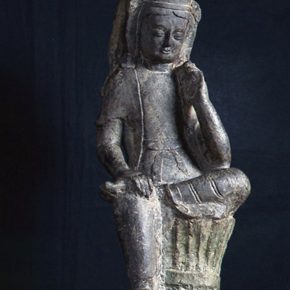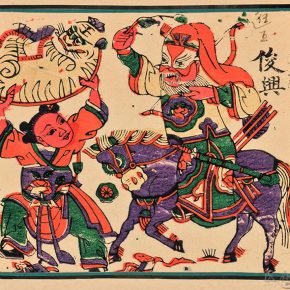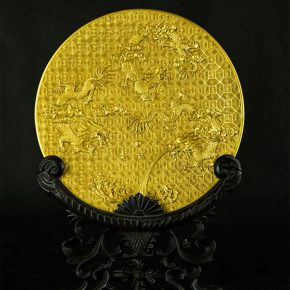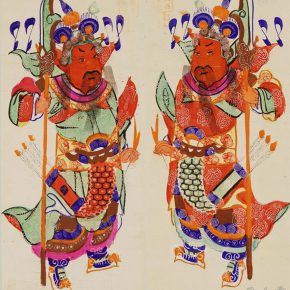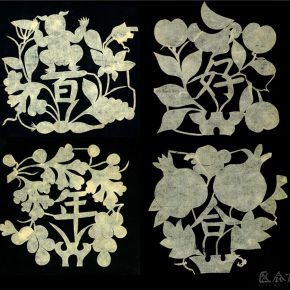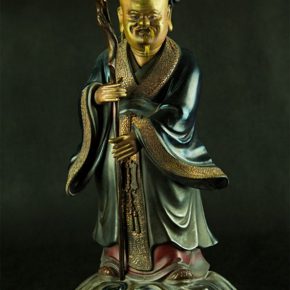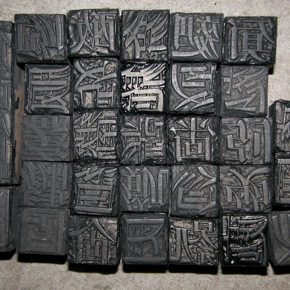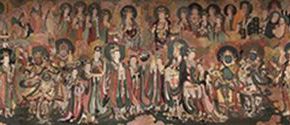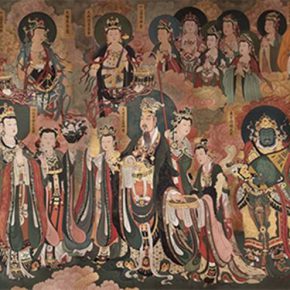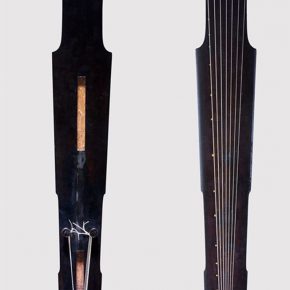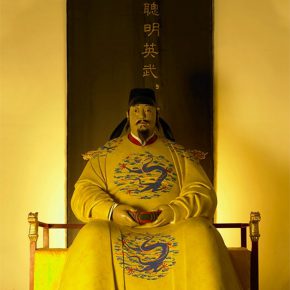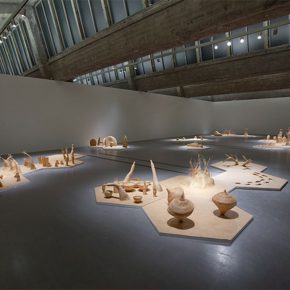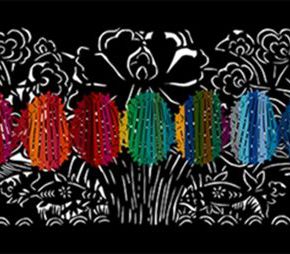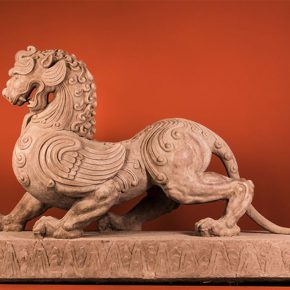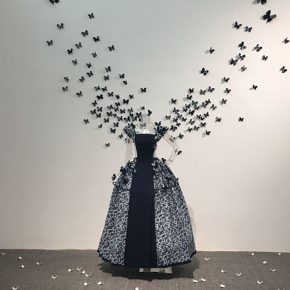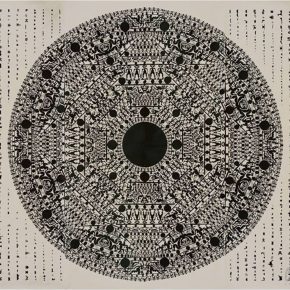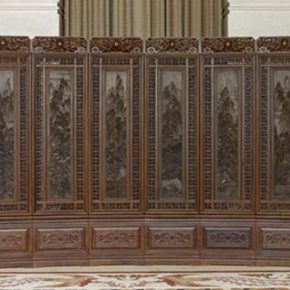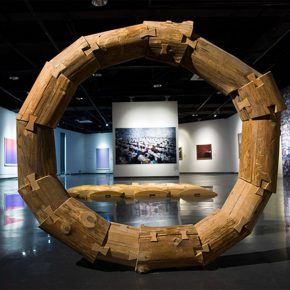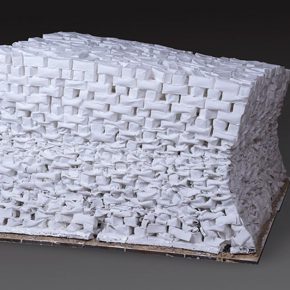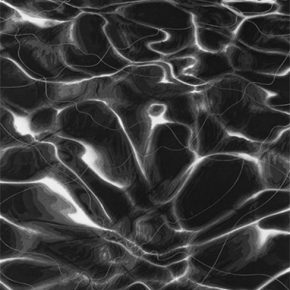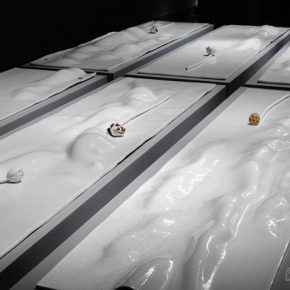
The “Kao Gong Ji” said “The country has six functions, while a variety of crafts are included in one of the functions. Craftsmen estimate the position of materials, putting the five materials into order, distinguishing the domestic objects, as named by Bai Gong.” China has been focusing on craftsmanship since ancient times, rather than considering labor as hard labor. However, in contemporary society, “creativity and production is separated, while design and labor takes different roads”, craftsmanship and craftsmen were gradually reduced to the pronoun of a low level. With this trend of the times, on the occasion of the arrival of the Spring Festival in 2017, an exhibition “focusing on skills and craftsmanship, concerned with the heritage of the crafts of the Chinese civilization” opened at the Ancestral Temple in Beijing, so that people’s eyes would look back to the prosperous cultures and materials of the land of China, from the people to the artists’ ingenuity, as well as allowing people to firmly believe that several thousand years of cultural traditions handed down by ancestors are of enough vitality and wisdom to face the present and future.
As a cross-border and comprehensive visual art exhibition that links the ancient and modern, the “Echo of Civilization” is committed to a series of exhibitions to explore the relationship between the traditional cultural resources and contemporary art creations. Following the first round entitled “Crossing Dunhuang”, the second round entitled “Chinese Craftsmen” once again appears at the temple. The exhibition is jointly hosted by the Central Academy of Fine Arts and the Beijing Municipal Federation of Trade Unions, and it is undertaken by the China Central Academy of Fine Arts Co-Innovation Art Creation and Research Center for the Silk Road and the Imperial Ancestral Temple Art Museum of China, co-organized by the Chinese Workers' Technical Association, with the strong support of BOE Technology Group Co., Ltd. The exhibition is divided into four parts: “Study the nature of things”, “Unique instruments”, “The best skill will expose the laws of heaven and earth”, “Show one’s own ingenuity” and show about 200 pieces (sets) of work by 83 artists.
Despite being close to the Chinese New Year, the opening ceremony still attracted a large number of leaders, participating artists, media and art lovers and the opening ceremony was chaired by Yue Jieqiong, Director of China Central Academy of Fine Arts Co-Innovation Art Creation and Research Center for the Silk Road. Fan Di’an, President of Central Academy of Fine Arts, Wang Shaojun, Vice President of Central Academy of Fine Arts, Han Shichun, Party member of Beijing Municipal Federation of Trade Unions, Vice President, Shi Guoli, Chairman of Beijing Financial Union, Deputy Director of the National Art Museum of China An Yuanyuan, Li Peng, Director of Beijing Working People’s Cultural Palace, Chen Huiping, Party Secretary of the Beijing Working People's Cultural Palace, and Tang Bin, Deputy Director of CAFA Art Museum attended the opening ceremony. Participating artists have also attended the exhibition, including Sui Jianguo, Lv Pinchang, Wang Shaojun, Qiao Xiaoguang, Lv Shengzhong, Qiu Zhijie, Wang Peng, etc., and many artists came especially to attend the opening from other places. Accompanied by the impromptu performance of guqin by the artist Wang Peng, Qiu Zhijie, Dean of the School of Experimental Art at the Central Academy of Fine Arts who recited the preface of “Echo of Civilization: Part II·Chinese Craftsmen” written by Fan Di’an, on behalf of the curatorial team, followed by Lv Pinchang, Deputy Dean of the School of Plastic Arts at the Central Academy of Fine Arts, Director of the Department of Sculpture delivered a speech on behalf of the participating artists, and Fan Di’an, President of Central Academy of Fine Arts then announced that the exhibition was open.
Combination and Juxtaposition of the Rare Ancient Artifacts and Contemporary Innovative Craft Works
The exhibition is based on the modern transformation and innovation of traditional crafts, to form the juxtaposition and combination of the rare ancient artifacts and contemporary artifacts. The exhibition brings together a variety of crafts, covering metal skills, stone carving, jade carving, textiles, printing and dyeing, papermaking, ceramics, woodenware, bamboo ware, lacquer, paper-cuts, clay sculpture, shadow puppets, etc., including both rare and precious ancient crafts, and the latest achievements by contemporary artists using traditional crafts. A large number of exquisite ancient crafts and unique contemporary art work gather together, fully demonstrating the spirit of “Chinese craftsmen”.
Among the participating artists there are the national arts and crafts masters, heirs of the non-material cultural heritage, and the contemporary artists who are active in an international arena. There are craftsmen and innovation studios at the first line of the industry and the researchers and creators of the academy who know about the ancient and modern. The exhibition through rich contents and the convergence of a variety of forms of time and space presents to the audience a visual feast in the New Year.
Appreciating the Beauty of Labor, Advocating the Spirit of Craftsmen
President of Central Academy of Fine Arts, Chief Planner of the exhibition Fan Di’an said that the Chinese nation had formed and highlighted the spirit of craftsmen since ancient times, which made important contributions to the Chinese culture and the development of world civilization. From “craftsmen building the capital” to “craftsmen originally creating things”, the implication of “craftsmen” is both the carrier of cultural ideals and aesthetic pursuits, as well as the embodiment of exquisite craftsmanship and manufacturing standards.
Last year, the “spirit of craft” was first written in the government work report, and the outstanding technical talent paid a more prominent role in leading social innovation. Beijing Federation of Trade Unions has launched the selection event of “Beijing Great Craftsman”, which guides people to pay attention to the beauty of labor, inspiring people to create and enthusiastically work based on their work.
The Imperial Ancestral Temple was once an ancestral temple of ancient emperors, though it is the working people’s cultural palace today. It is the appropriate place and appropriate time to launch the exhibition “Chinese Craftsmen”. As President Fan Di’an mentioned in his opening speech: “The Imperial Ancestral Temple is a model for Chinese craftsmen. With the approaching of the Chinese New Year, let us listen to the echo of civilization, gathering together to appreciate the ancient brilliance and contemporary innovation of Chinese craftsmen.”
The exhibition continues to March 20.
Text by Zhu Li, translated by Chen Peihua and edited by Sue/CAFA ART INFO
Photo by Yang Yanyuan/CAFA ART INFO


